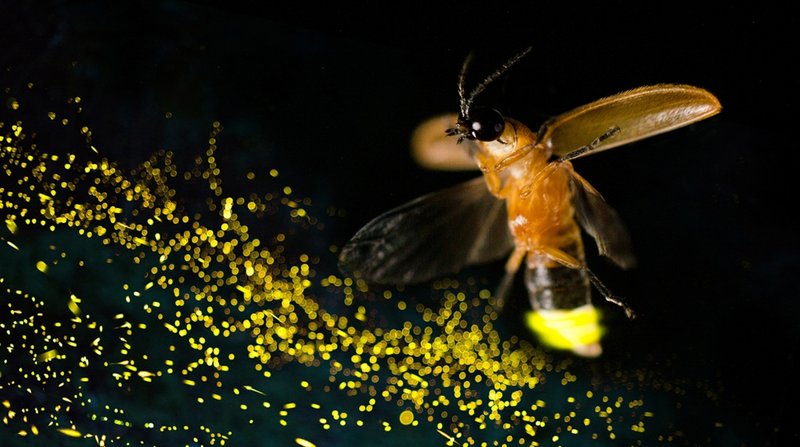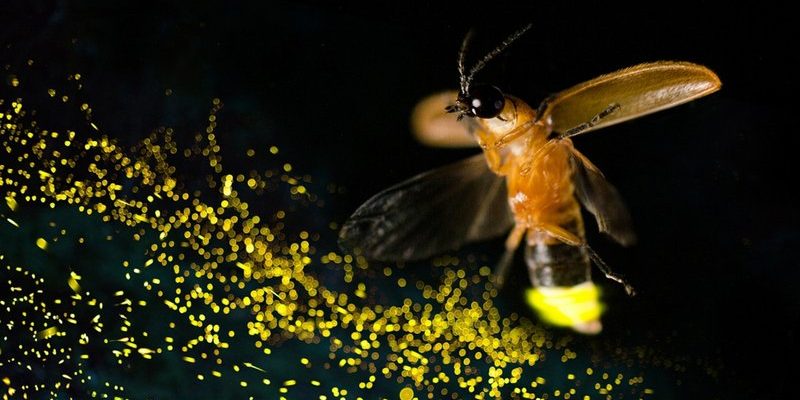
The technical term for the light they produce is bioluminescence, which comes from a chemical reaction happening in their bodies. Think of it like a light bulb turning on when you need it—only, in this case, it’s all about attracting mates and warning off rivals. So, let’s dive deeper into the fascinating world of fireflies and explore how they interact and communicate through their brilliant flashes.
Understanding Firefly Bioluminescence
Fireflies produce light thanks to a special chemical called luciferin. When luciferin reacts with oxygen, it creates a glow that can be seen in the dark. This process is kind of like how a glow stick works—when you crack it open, it starts to shine. But fireflies have their own twist on it! Their lights can vary in color, intensity, and pattern, which plays a major role in their communication.
There are over 2,000 species of fireflies, and each has its own special flashing pattern. For instance, some fireflies may blink in short bursts while others have longer flashes. This variety helps them convey different messages. You might be wondering, “Why go through all the trouble of twinkling lights?” Well, for fireflies, it’s all about attracting a mate and signaling their presence.
When a male firefly spots a female’s light, he responds with his own flashing. It’s a dance of lights that helps them to find each other in the dark. If they sync up correctly, it might lead to a romantic encounter. What’s fascinating is that some female fireflies even mimic the flashing patterns of their male counterparts to lure them in, only to feast on them later! Talk about playing hard to get!
The Role of Flash Patterns in Mating
Flash patterns are crucial in firefly interactions, especially when it comes to mating. Think of these patterns like a secret handshake. Each species has a unique sequence that can tell who’s who in the firefly world. For example, a species known as Photinus fireflies has a specific rhythm: a quick flash, followed by a pause, then another flash. It’s their way of signaling to mate.
When males flash their lights, females can assess how healthy and strong the males are based on their flashing patterns. Here’s the thing: if a male has a consistent and strong pattern, it signals that he’s fit and a good choice for mating. It’s nature’s way of ensuring that only the best genes are passed on.
Occasionally, the flashing can get a bit competitive, with males trying to outshine each other. This adds an extra layer to their “light show.” So, next time you see fireflies, remember that it’s not just about pretty lights—there’s a whole courtship drama happening right in front of you!
Communication Beyond Mating
While attracting mates is a big part of firefly communication, it’s not the only thing they do with their lights. Fireflies also use their glow to establish territory and communicate presence to potential rivals. Imagine being in a crowded room and trying to find your space—fireflies do something similar in the great outdoors.
When a male firefly flashes his light, he’s not just saying, “Hey, look at me!” He’s also warning other males: “This is my area, so back off!” This territorial signaling helps reduce conflict between males, as they can establish dominance without resorting to physical fights. It’s like having an invisible boundary marked by light.
Interestingly, some fireflies will modify their flash patterns when they sense another firefly nearby. This adaptation can help them avoid confrontations and keep their territory intact. Nature has a way of ensuring that communication is not just for mating but also for maintaining peace in the firefly community.
Firefly Communication in Different Environments
Fireflies are adaptable creatures and can communicate effectively in various environments. Whether they’re lighting up a backyard, a forest, or a wetland, their flashing signals can still reach one another. However, the surrounding light can impact their communication. For example, in urban areas with bright streetlights, their flashes might be less visible.
In contrast, during a moonlit night, their light shows can become more pronounced, as the glow stands out against the darker backdrop. Some species are even able to adjust their flashing intensity to compensate for environmental light levels. This flexibility ensures that their messages aren’t lost, regardless of where they are.
Additionally, fireflies use their communication abilities to adapt to different predators in their surroundings. By changing their flash patterns, they can avoid drawing attention to themselves, keeping them safer from those looking for a snack. It’s a remarkable way of using communication for survival, allowing them to thrive in various habitats.
The Impact of Urbanization on Firefly Communication
As urbanization expands, firefly habitats are changing, and their communication methods are affected too. Bright city lights can drown out their natural glow, making it harder for fireflies to see and respond to each other. It’s a bit like trying to have a conversation in a loud bar—distracting and frustrating!
Research shows that firefly populations are declining in many urban areas, which can be traced back to light pollution and habitat loss. This isn’t just bad news for fireflies; it also affects ecosystems since they play a vital role in the food chain. Their decline signals broader environmental issues that need attention.
Efforts are being made to help fireflies adapt to their changing environments. Conservation programs that promote natural habitats and reduce light pollution can support firefly populations. Simple actions like turning off unnecessary outdoor lights can make a big difference for these glowing friends.
Tips to Attract Fireflies to Your Yard
If you want to enjoy the magic of fireflies in your own backyard, there are a few steps you can take to make your space inviting for these glowing insects. First things first, create a natural environment. Fireflies thrive in areas with tall grass, flowers, and moisture. Consider planting native plants to give them a cozy habitat.
Next, reduce outdoor lighting. By minimizing bright lights in your yard, you can help fireflies feel safer and more comfortable. If you want to enjoy your outdoor space at night, try using softer, ambient lighting instead of harsh lights. This will allow you to appreciate the fireflies’ dance without overwhelming them.
Lastly, maintain a moisture-rich environment. Fireflies lay their eggs in damp areas, so consider adding a small pond or keeping your garden watered. By creating a friendly environment, you can enjoy watching fireflies light up your nights!
The Fascination of Firefly Communication
The way fireflies communicate and interact is a beautiful example of nature’s creativity. Their flashing lights are like a language of their own—a mesmerizing dance that combines science, romance, and survival. Whether they’re finding mates, establishing territory, or adapting to their surroundings, fireflies remind us of the wonders of the natural world.
So, as you watch these little lights twinkle on warm summer nights, think about all the messages being exchanged in the air. Next time you see them, you’ll know it’s not just a show; it’s a vibrant conversation happening right before your eyes. Now that’s something worth appreciating!

